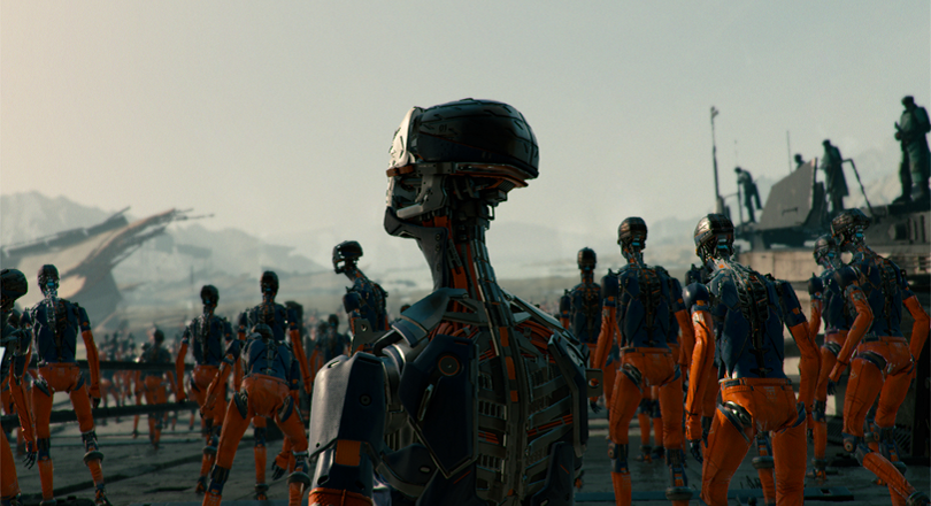Filmmakers Turn to Unity's Game Engine

Movie-making is an expensive endeavor, especially those that rely on special effects, but Unity Technologies' newest platform could help change that.
The company's Unite Austin developer conference in October attracted a few Hollywood types, including South African director Neill Blomkamp. Best known for Oscar-nominated dystopian flick District 9, Blomkamp turned to Unity's cinematic tools for his latest project, ADAM: The Prophet, out this week.
Unity 2017.2 gives movie tools to non-coders, like Cinemachine, a procedural cinematic and in-game camera system acquired by Unity Technologies in December 2016. It was built by Adam Myhill, who joined Unity after the acquisition to become Head of Cinematics. His 20-year career as a computer graphics supervisor and cinematography spans video games (NBA Street Vol. 3) and movies (Down Here), with stints at Pandemic, Blackbird Interactive, and Electronic Arts, where he shot a Need for Speed The Run commercial directed by Michael Bay.
"We're creating a toolset where people can work together, see everything in context, while being freed from the sequential linear slow traditional pipeline, which only allows creative input in certain places," Myhill explained. "With Unity you can change things at the last minute—there's no post—when you're done, you're done. You get to empower our Cinemachine robots to mix and match ideas; you're not stuck in keyframing technical issues, or doing laborious tasks. In fact, we believe Unity 2017.2 allows you to work and think like a director for the first time."
This ease of use appealed to Neill Blomkamp.
"We had our own internal scripts, and non-live-action concepts, that we wanted to explore...in a real-time engine," Blomkamp told PCMag. "But traditional computer graphics felt as if they might be too time consuming and inefficient so we put the work aside to focus on other stuff."
Then Isabelle Riva, Head of Made With Unity, contacted Blomkamp about ADAM: Chapter 1, a short film created with the Unity game engine and rendered in real time. She asked if it was something Blomkamp's Oats Studios would want to build on top of and Blomkamp said yes.
"Unity offers a revolutionary promise to filmmakers who want to make animation and visual effects content but can't afford expensive post-production pipeline tools, because it's a full digital post studio—camera animation, VFX animation, editing, lighting, rendering and compositing—in one desktop solution," Riva explained. "This alone is sure to disrupt fossilized Hollywood productions."
The result was ADAM: The Mirror (above). After Riva handed over the tools and original asset library, Blomkamp sat down with his creative team and fleshed out more of a narrative arc for the ADAM story.
"Everyone said: 'This is the project we've been looking for.' So we took what had been created, then wrote an overview of where the story could go—a mythology, if you like—and, out of that we picked two stories to make two films out of," said Blomkamp.
For his second film—ADAM: The Prophet—Blomkamp wanted to push further into adapting photogrammetry (real-to-3D) environments. For ADAM: The Mirror, he took his crew three hours east of Los Angeles to shoot the desolate landscapes around Coachella, and is now perfecting his techniques to produce computer-generated humans.
"In the mythology there are three main factions and two of the characters have digital/CG faces. For ADAM, this required separate facial capture for high fidelity, which I won't do again, I'll do motion capture and facial capture at the same time."
With the Neill Blomkamp seal of approval on the platform, Isabelle Riva and Adam Myhill are now taking Unity 2017.2 as a show-and-tell to Hollywood types, getting feedback, and hopefully buy-in, from studio chiefs.
"Producers hear about the efficiencies of games engines and call us in for a studio meeting," confirmed Myhill. "So we get in a room with a bunch of movie veterans, they see a scene, and say, 'These are the graphics?' and we say, 'yup, and we're doing 30 a second.' The bit that gets them every time is when, in mid-demo, I say: 'I'm just going to move this camera angle and switch out that light' and they stare in amazement."
That sound you just heard was the explosion of 1,000 post-production VFX companies around the world.
"In fact I had one well-known CG supervisor at a top studio do the table flip motion after saying 'This is the future!'" laughed Myhill.
So, is the next step for the Montreal-based team opening an actual Hollywood office? After all, Unity Technologies has already forged relationships in LA through several Unite developer conferences. "We have people in LA, but not an official office. Yet clearly it's a center for the people we'd like to work with," he said.
In the meantime, if you have the creative urge, and fancy building your own version of ADAM, Unity has released the assets, and executable files, so you can import and make magic with them.
This article originally appeared on PCMag.com.